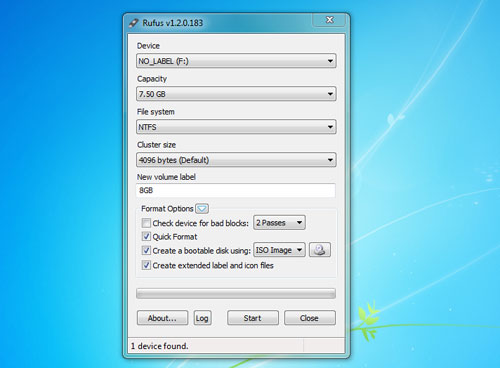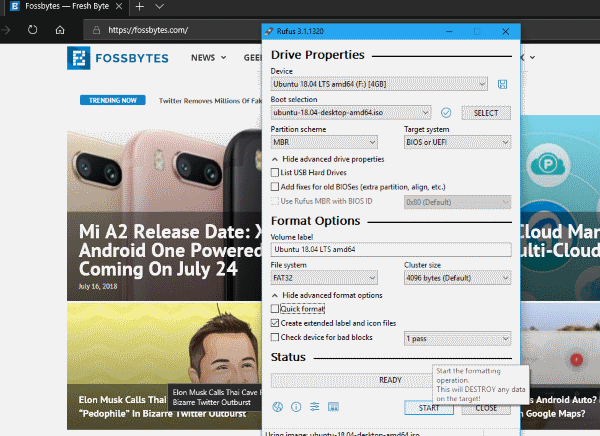Rufus Not Detecting Usb
Mar 09, 2013 Rufus doesn't display any devices #134. Pashinin opened this issue Mar 9, 2013 49 comments. And unlike what other software chose to do, Rufus was designed not to list non USB drives, to prevent people reformatting them by mistake. Different software use different approaches. Rufus detecting 0 drives #887 7 of 9 tasks complete. Jun 13, 2019 i have also same problem my usb drive is not detecting in boot menu. In my laptop fast boot mode is also missing pls hep me. Make sure your USB is not Kingston 2.0!!! And try on a working computer before a new one! Use a program called 'Rufus' to create the Windows USB Bootable memory stick! (Worked first time) 3) Go into the.
The general steps to install Windows OS on a USB flash drive are like this:. First, create a bootable USB flash drive. Second, download the Windows image on the bootable USB drive.
Third, go into the BIOS settings, set the USB as the boot priority and choose to boot from USB.But here comes the problem, you took the right steps and enter into the BIOS environment with success, only see that the bootable USB drive not showing up there! Why doesn't BIOS recognize or detect the bootable USB flash drive then? Why Doesn't the Bootable USB Drive Show up in the BiosHere we have many thinkings on solving a problem, which appears to be missing somewhere. You may perhaps have attempted to reconnect the USB installation media for several times, but why the computer still doesn't recognize it?
Answers are now given. USB Connection Issues Resulting from Loose or Broken USB PortSolution - Try to connect the USB drive through every USB port that is available to use on either a desktop or laptop.
Windows 10 Not Detecting Usb Device
If necessary, find another working computer and repeat until completely exclude the factor of a not working port. Incorrect BIOS SettingsSolution - You must configure the boot order sequence in BIOS settings so that your computer can make its own decision which physical device it should select to boot from. So, to make BIOS correctly detect your USB drive and pick it to boot the computer, make sure that you choose the USB as the boot sequence priority.To make bootable USB show up in BIOS, try to specify the boot order:. Depending on the BIOS manufacturer, press and hold ESC, F1, F2, F8 or F10 during the initial startup screen, a menu shall appear. Choose to enter the BIOS setup and select the BOOT tab.
System devices appear in order of priority. To give a USB device boot sequence priority over the hard drive, try to move the hard drive device to the top of the boot sequence list, expand the hard drive device to display all hard drives and move the USB device to the top of the list of hard drives. Save and exit the BIOS setup utility.Besides the fixed BIOS settings, some experienced users suggest disable Safe boot and change the Boot Mode to 'CSM' or 'Legacy' instead of 'UEFI'. So, you could possibly take this piece of advice!
Making Bootable USB Flash Drive Is UnsuccessfulSolution - Have you checked whether your USB is really bootable or not? Some people didn't see a USB drive appearing in the BIOS boot menu only because the 'bootable' USB drive they've created is not bootable at all! Especially by means of using cmd to.To deal with bootable USB drive not showing up or recognized the issue in BIOS boot menu in Windows 10/8.1/8/7, a piece of could help.
Computer Not Detecting Usb


For example, EaseUS Todo Backup offers a feature to install Windows OS on a USB drive that ensures 100% bootable on any other computer. That is to say, using this to create a new bootable USB drive from scratch, you can easily repair bootable USB flash drive that is not showing up, detected, read or recognized!